The Apple Watch Review
by Joshua Ho & Brandon Chester on July 20, 2015 8:00 AM EST- Posted in
- Wearables
- Apple
- Mobile
- Apple Watch
Design
With a new form factor comes the need to deeply analyze design, and in the case of a smartwatch it really becomes more important than ever before. Like clothing, watches are deeply personal in a way that smartphones weren’t. The most immediate aspect of the Apple Watch is the size. I’ve used the Moto 360 before, and while I didn’t think it was too big for me, people with smaller wrists can look rather ridiculous wearing the Moto 360 or many other smartwatches. Even in the 42mm variant, the Apple Watch is surprisingly small for a smartwatch. The 38mm variant is definitely sized for people with smaller wrists.
Outside of height and width, the thickness of the watch is definitely a bit more than what one might expect from a regular watch, but it isn’t really all that noticeable due to the rounded curves of the casing. When looking at the display, the display’s cover glass also blends seamlessly into the metal case of the watch, which really looks impressive indoors, although the illusion is somewhat lost in strong sunlight as it becomes obvious where the display ends and the bezel begins. This really helps with analog watchfaces, but in practice I found I was never really bothered by rectangular watch displays. If anything, I’ve found round watch display to lack information density; round watch displays just aren’t pragmatic for general purpose computing.
In order to really give a sense of what the watch looks and feels like when it’s on the wrist, I’m going to start by assuming that most people will wear this watch on their left hand. This places the side button and digital crown on the right. If you read nothing else in this entire article, you should know that the digital crown is probably the best solution I’ve seen to the smartwatch input problem yet. The digital crown manages to have just the right amount of friction to the knob so input feels deliberate without being difficult. The notches that surround the crown really help with gripping the crown and improve the precision of input with the digital crown. Both the digital crown and side button have a solid, clicky action, but it’s probably not a surprise at this point given that Apple seems to consistently nail down details like button feel on their iPads and iPhones.
On the left side of the watch, the only notable interruptions are the speaker and microphone holes. As far as I can tell there’s only a single microphone hole, but it seems that Apple has some form of noise cancellation as background noise is generally well-muffled.
The top and bottom of the watch are just the attachment points for the bands of the watch, but from a design perspective this is probably one of the most crucial. The interchangeable bands work incredibly well because of just how easy it is to attach and detach bands. Attaching a band is as simple as matching with the slot and sliding it in, although it is possible to get it wrong by putting a band in upside-down. The fit and finish of both the Milanese loop and sport band that I received were both essentially perfect here, and the Milanese loop band has a glossy finish on the side that helps the band to blend in with the casing of the watch.
The bands themselves are probably the most important aspect of the Apple Watch's design. While Apple definitely hopes that users will be purchasing bands in addition to the one that comes with their watch, it's a safe bet that most users will be using the fluoroelastomer bands that ship with the Apple Watch Sport and the entry level Apple Watch and Apple Watch Edition models. Because the fluoroelastomer band ships with the Sport version of the watch and has to fit every wrist size the fluoroelastomer band actually is more like one and a half bands. Included in the package is the section of the strap with the metal pin, and two pieces of different lengths with holes in them. The longer one is meant for users with larger wrists, and the smaller one for users with smaller wrists.
As for the band itself, the feel of it can be difficult to describe. When they were first revealed, my initial thought was that they would have a somewhat firm and rubbery feel. It turns out that the bands are very flexible, and also very soft. The best description I could give is that it feels similar to the soft touch back of the black Nexus 5 and Nexus 9, but much smoother and very resistant to smudges. Water also tends to roll right off of it which makes it very well suited to fitness activities. Since it's not infinitely adjustable there's always a small mismatch between the size of the band and the size of your wrist, but there's not much that can be done to solve that with a pin and tuck design.
In the case of the Milanese loop, the infinitely adjustable design has basically solved the teething issues I have with wearing most watches. The band manages to deal with the issues I’ve always had with wristbands that always seemed to be either too tight or too loose. The fabric-like pattern of the metal links also helps to distribute pressure while allowing for ventilation, so I don’t feel the need to constantly take off the watch due to trapped sweat or some similar issue. It’s also easy to clean the metal bands if they get dirty, although I suspect the leather bands will be rather difficult to deal with in this regard. There is some potential to pinch hairs, but in my experience this is pretty unlikely and I can count on one hand the number of times I’ve noticed this problem in the past few months. As a result, this is probably the only watch I’ve ever worn that is consistently comfortable regardless of weather conditions. Independent of how good the wearable is from a digital logic/software standpoint, I’ve noticed that these aspects of the design are far, far more crucial than anyone seems to notice. In the case of Apple Watch, the bands are pretty much as good as it gets.
Moving past the bands, the back of the watch is somewhat unremarkable. There’s a rounded crystal that houses the heart rate LEDs and sensors, and serves as an attachment point for the MagSafe wireless charger. In practice, the only notable issue here is that the crystal seems to act as a pressure point when wearing the Watch, but it’s likely that this is done to ensure proper contact for the heart rate monitor.
Overall, Apple has pretty much nailed the design of the watch. The controls are well-executed and placed in a pragmatic position, in a way that I haven’t really seen anyone else achieve yet. The only real objection I have to the design is that the stainless steel casing seems to be a magnet for small scratches. They’re tough to see in most conditions, but with strong lighting it becomes pretty obvious that it’s pretty easy to scratch the watch casing. I suspect the only solution here is to regularly buff out scratches from the casing like most any stainless steel watch. As for the Apple Watch Sport, the 7000 series aluminum seems to hold up to daily use without any sign of scratches or chips on the casing of the watch. At 25g and 30g for the 38mm and 42mm respectively it's also lighter than the 40g and 50g masses of the stainless steel models. Since the Sport edition uses Ion-X glass like the iPhone 6 instead of the Sapphire crystal of the normal Apple Watch and Apple Watch Edition, the display cover glass is much more susceptible to scratching. While I haven't encountered any scratches at this point, the sapphire glass editions will undoubtedly better stand the test of time.




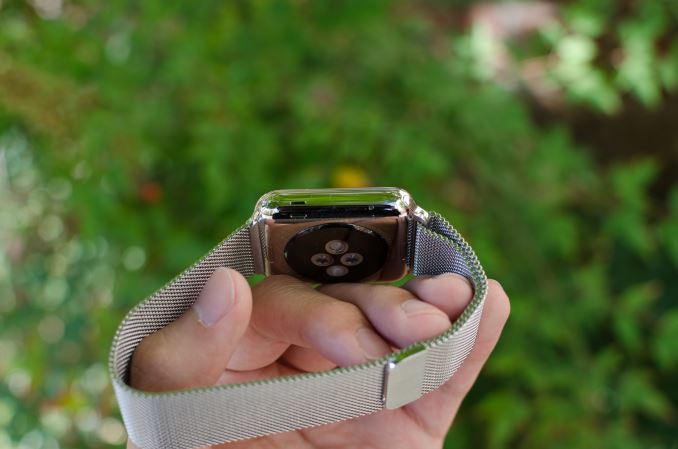
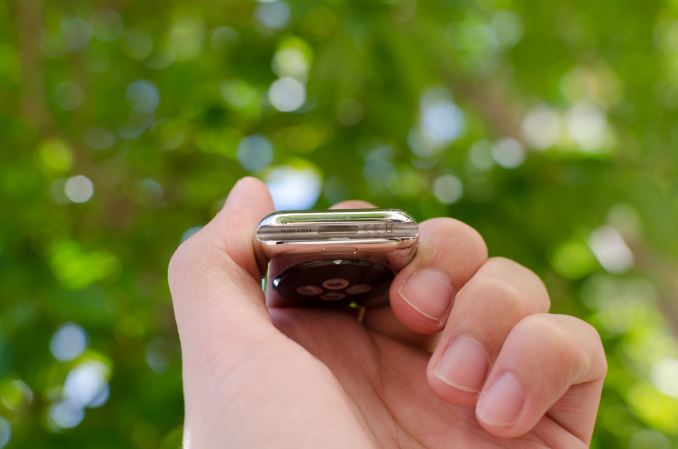
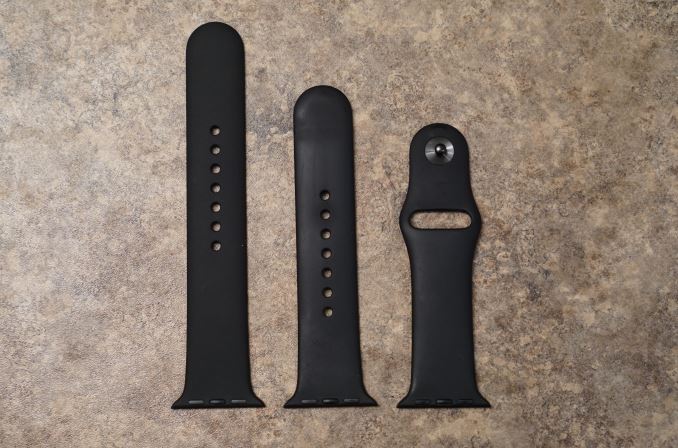
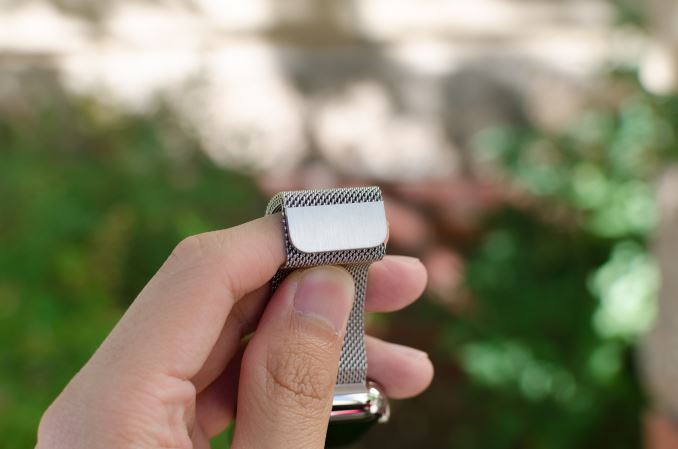
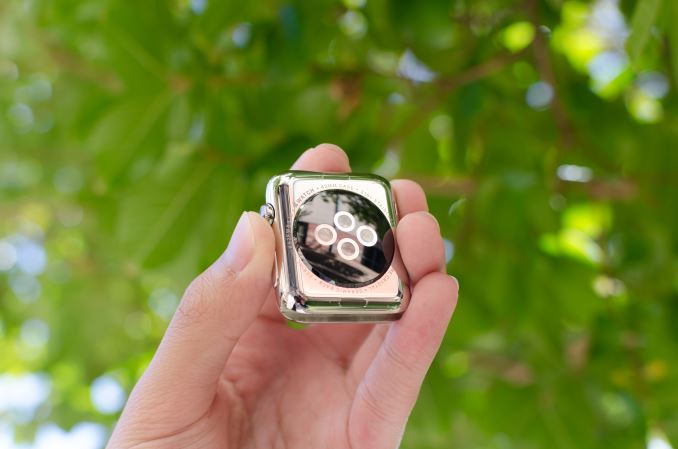








270 Comments
View All Comments
Devo2007 - Monday, July 20, 2015 - link
Given that they received both the sport band and the Milanese loop (note "received" and not "bought"), you know they had to give a positive review. Anything less would have Apple PR threatening to block Anandtech from future press events or review samples.KPOM - Monday, July 20, 2015 - link
Pretty much every reviewer, including Nilay Patel, got the Sport plus one band of his or her choice, usually the Milanese, Link, or Leather Loop band. Also, this review is out about 3 months after the other major sites, so it isn't like they got priority or anything like that.Devo2007 - Tuesday, July 21, 2015 - link
My point is that it was a review unit that it appears they got to keep (they've had the watch for months).Sorry, but it simply reads like a love letter to Apple, and while some flaws are mentioned, pretty much any other wearable would have been slammed for it. Here, it's a "version 1.0 thing"
S2k15 - Wednesday, July 29, 2015 - link
Congratulations for a comment filled with nothing but absolute and complete horse-shit, and for making yourself look like a complete moron to anyone who isn't an insane troll like you.Faked screen resolution? Huge bezels? Insufficient battery? Oversized vibration motor? Kids version? This is the first time I ever hear a single of these creative "complaints", probably cause you pulled them straight out of your ass.
anomalydesign - Monday, July 20, 2015 - link
The aspect I'd like to see further discussed is the price. Is there enough functionality in this to justify it costing more than your smartphone in many cases? The functionality/price ratio has been an issue for the existing android wearables, and those generally cost 1/3 as much, or less (while offering strikingly similar functionality).I can't help but think that the high price point Apple picked was partly to address the abandonment issue you mentioned. If you pay $600 for something you're much more likely to make a point of using it than if you paid $100 for the same item. Even still, after everyone was spotted wearing Apple watches the first week or so they were out, it seems like if anything there are fewer in the public eye now than then. Slow adoption is OK, but declining adoption is a bad thing.
p_giguere1 - Monday, July 20, 2015 - link
The functionality/price ratio is pretty much meaningless if we don't perceive this as a pure tech device, but rather a tech/fashion hybrid. Fashion is pretty much the opposite of cost-effectiveness, but it's also something most people value (to different extent).Maximizing that ratio would most likely mean making the device not fashionable at all, and therefore not appealing to the non-nerdy demographic. The key is finding the right balance to please most people. Most people are totally willing to sacrifice some of the functionality/price ratio for fashionability.
If what Apple wanted was to provide a good functionality/price ratio, the current aluminum (low-end) model would probably be the high-end model, and they'd offer a plastic model as the low-end. They don't because then people would perceive it more as a gadget and less as fashion accessory/jewel.
While the functionality/price ratio could definitely be discussed, I don't think it should be measured like maximizing is objectively good. Making it pretty low is actually likely what will contribute to the Apple Watch's success. Beats by Dre probably wouldn't be the best-selling high-end headphones either if they targeted a high functionality/price ratio.
FunBunny2 - Monday, July 20, 2015 - link
-- The functionality/price ratio is pretty much meaningless if we don't perceive this as a pure tech device, but rather a tech/fashion hybrid.But it isn't a tech device. An old X-term has more brains than the Watch.
extide - Monday, July 20, 2015 - link
You do a disservice to real high end headphone by calling Beats by Dre 'high end', lol.Guspaz - Monday, July 20, 2015 - link
My iPhone cost $950, the Apple Watch costs $350. I didn't buy an Apple Watch, but it wasn't because of the price. It was because the first-gen product seemed like it needed a few more revisions.That said, the sport should have a sapphire screen, and the bands should be much more affordable, but still, cost wasn't the reason I didn't buy.
KPOM - Monday, July 20, 2015 - link
My guess is that if GTAT didn't go under they would all have sapphire crystals.